
by Ben Zackheim | Oct 10, 2014 | The Camelot Kids |
 Head on over to Amazon to grab The Camelot Kids: Part Two
Head on over to Amazon to grab The Camelot Kids: Part Two for $1! I’m so proud of this one. It took a little longer to release than we’d hoped, but I hope you’ll agree that it was worth the wait.
for $1! I’m so proud of this one. It took a little longer to release than we’d hoped, but I hope you’ll agree that it was worth the wait.
The Camelot Kids: Part Two is the next chapter in the Fantasy series readers are calling, “a thoroughly modern and thoroughly fun new take on the legends of Camelot!”
Simon Sharp just got kidnapped by a troll on the shore of Scotland’s Loch Duich. But before he can get his head around that incredible fact, he’s saved by a 7-foot tall elderly man who calls himself Merlin. It’s hard to deny that something odd is going on.
But what?
Join Simon as he takes his first steps into New Camelot, a castle city of unparalleled beauty. But his stay won’t always be a pleasant one as he trains to become a warrior side-by-side with 149 other kids… all descendants of the original Knights of the Round Table.
The Camelot Kids: Part Two answers many questions from Part One, and adds a few more that will keep you guessing until the end!
If you missed the first installment of The Camelot Kids, pick up The Camelot Kids: Part One for a buck, exclusively on Amazon.com!

by Ben Zackheim | Oct 1, 2014 | Writing |
Little Boo is a pet fish. He was given to Merlin by his friend Myrtle on his 3712th birthday. Merlin, however, has no time for animals that don’t make themselves useful.
So he put Little Boo to work as the manager of his store/lab, The Spell. Hey, who better to manage people than a pet, right?
To get around the whole Fish-Can’t-Walk-or-Talk thing, Merlin built Little Boo a robotic body, powered by magic steam.
Welcome to the world of The Camelot Kids!
And here he is, making himself useful. Ian Greenlee captures the moment when Little Boo offers Simon and Maille Rose a tour of The Spell. It doesn’t go well, as you’ll see in The Camelot Kids: Part Two!


by Ben Zackheim | Sep 29, 2014 | Writing |
Here’s a little peek at Ian Greenlee’s illustration process on The Camelot Kids. He goes through many steps to bring us the fantastic glimpses into the world of Simon Sharp and Merlin.
Here you see his sketching, volume, perspective and FINAL steps. The piece shows Simon and Hector arriving at Uncle Victor’s castle for the first time.
The first piece is a sketch that he passed by me and Nathan Fox for feedback.
The second piece is a study on volume and shading.
The third piece explores perspective, light source and focus.
The last piece is the final.
Pretty cool, huh? Oh, be sure to zoom in on the final piece. It has a bunch of hidden surprises.
Get The Camelot Kids: Part One on Amazon now for $1!
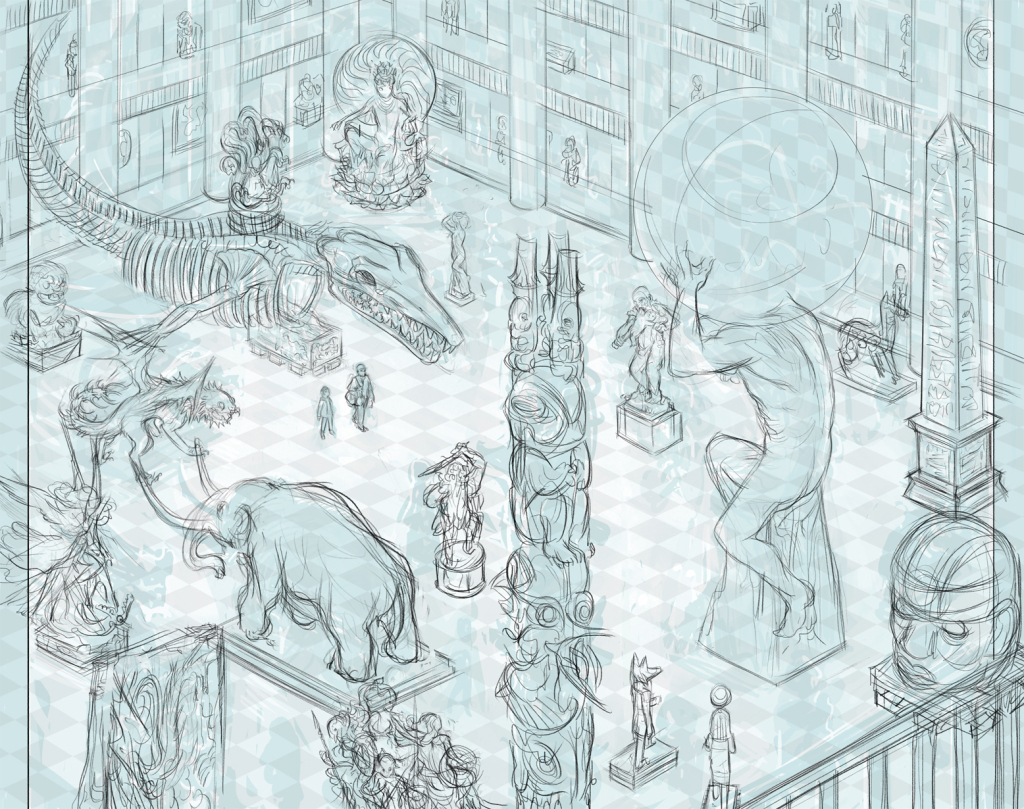
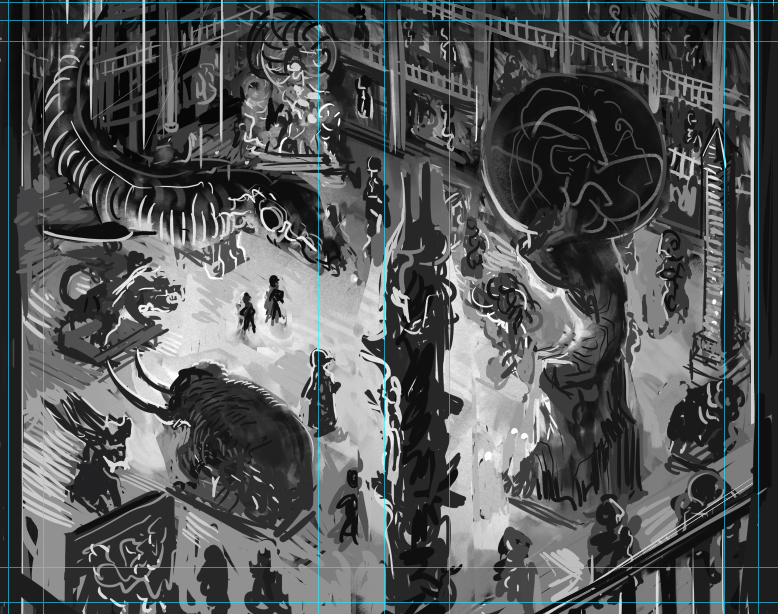
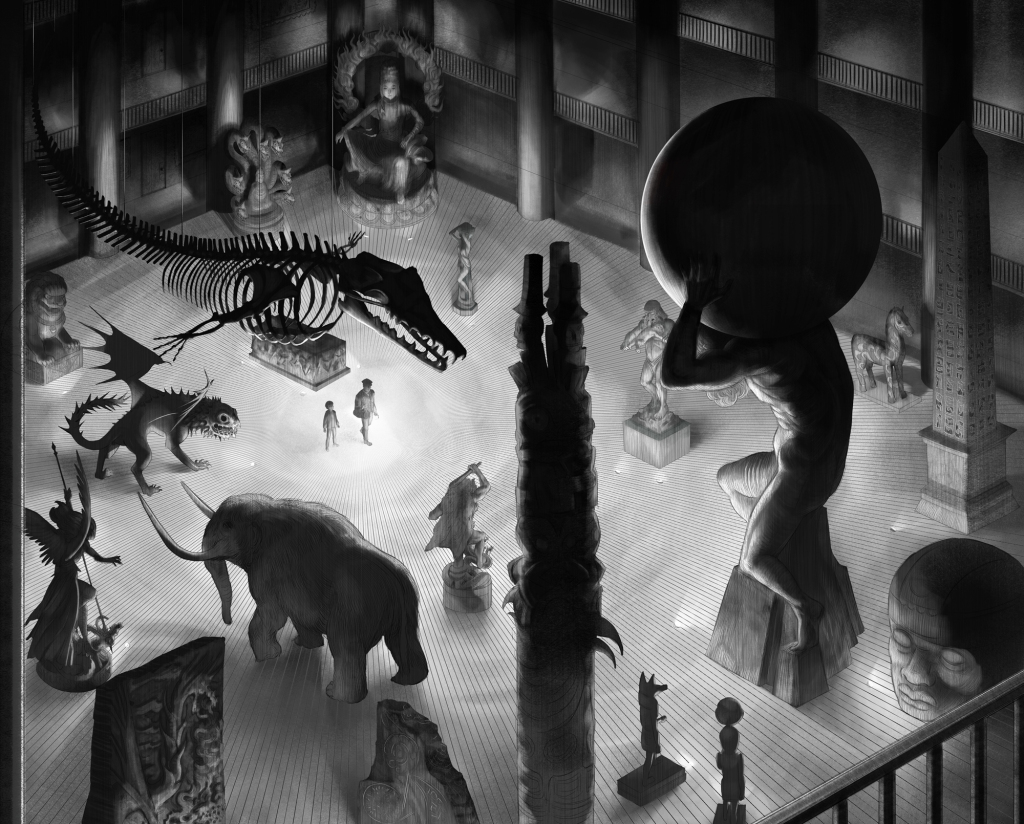
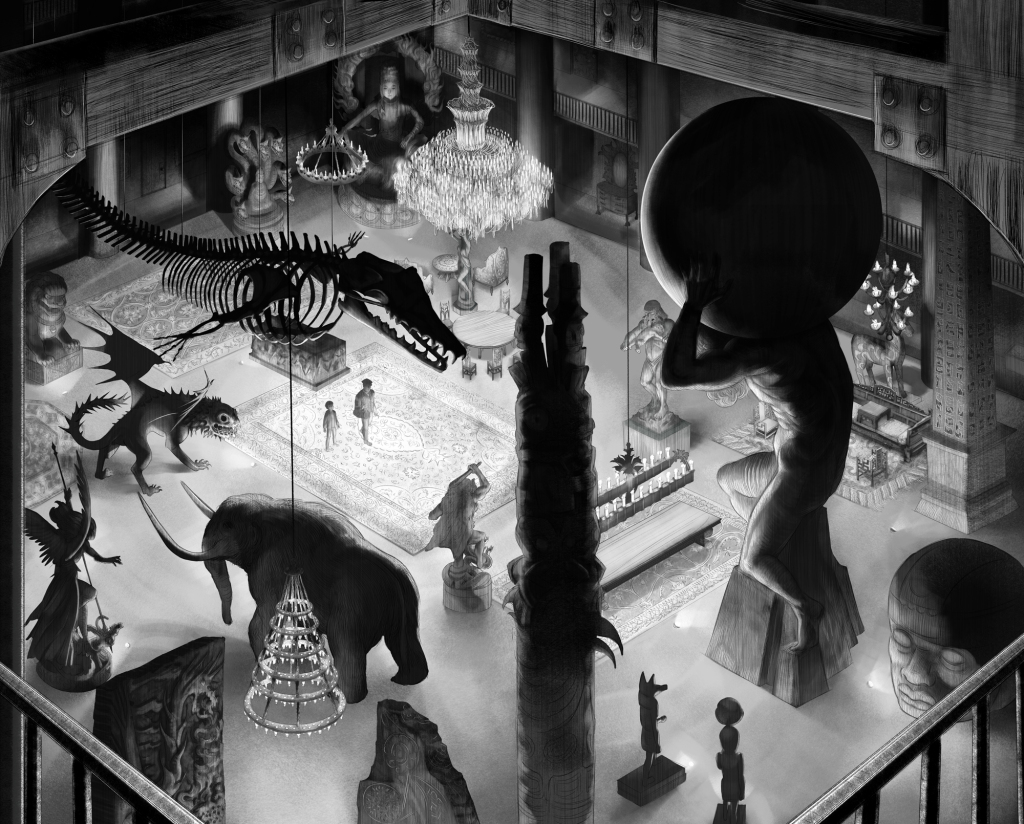

by Ben Zackheim | Sep 19, 2014 | The Camelot Kids |
Rukkush! The former apprentice to Merlin makes his debut in The Camelot Kids: Part Two. Ian Greenlee, the artist for the book’s interiors, tweeted this little peek at a new piece that shows the elf’s sinister grin.
And those fingernails!
I suppose that’s what you get when you’re stuck in a room for a thousand years with no nail clippers.
Be sure to pick up your copy of The Camelot Kids: Part One on Amazon. The ebook is only a buck and it might just make you see Camelot in a brand new light!


by Ben Zackheim | Sep 15, 2014 | Book Promotion, Digital Identity, Sell your book, Writing |
My goal with this post:
To give you clear tips on how to arrange your Twitter activity. The tips will be practical and will help you manage your personal and professional sharing. Let me know how I did in the comments!
I did it. I finally did it.
I’ve been on Twitter since 2007, which means, well, I’ve spent a lot of time worrying about tweeting since 2007. Oh, I have a lot to say. I have a lot to share. I always spot interesting conversations. The problem for me has never been finding things to disperse. The problem has been The Twitter Time Suck.
The Twitter Time Suck is:
- The black hole of starting to tweet interesting material and not being able to stop.
- The anxiety around whether my tweets are having maximum impact, which leads to more tweeting.
I’ve spent the last several years trying to find a way to make posting take less time but be more rewarding. What do I mean by rewarding?
- Just as every conversation I have with a person is part of the fabric of my life, I want my posts (on every platform) to reflect who I am (NO PRESSURE!)
- I enjoy connecting with someone.
- I like to get traffic to my site.
- I like to sell books.
If those four points sound familiar, and you also fret about The Twitter Time Suck, then I may have some good news. I’ve found a perfectly reasonable system to keep my tweeting to 15 minutes per day.
Last year I started to manage social media for The School of Visual Arts’ MFA Visual Narrative program in NYC. It’s a fantastic low-residency Masters degree with faculty like Benjamin Marra, Joe Kelly and Edward Hemingway. Because the focus of the degree is on visual storytelling you can imagine how daunting the task of sharing information via Twitter was to me. Remember, I still had to manage my own social media efforts. Having so much to dig through easily led to brain-hurt.
So I started to try a few things to help me juggle it all. I’ll spare you the trial and error.
This is where I landed
1) Use your morning activities:
We have coffee, we shower, we brush our teeth, we read the news. Morning routines (even busy ones) are where many of us quietly review our priorities and our dreams/wishes/aspirations for the day. There’s a lot to find in that mental landscape. Be mindful of your thoughts. Don’t just think them and let them go. If the warm water on your head makes you think of something funny, say it out loud. That will help make it real and memorable. If you want to share it with the world, well, then you have your daily observational tweet!
If you come up with more than one thought, jot it down in a txt file asap. You can tweet it later using…
2) Hootsuite. Use it.
Hootsuite allows you to queue up your tweets. This is the critical task in any effort to simplify tweeting. You can also use Hootsuite to post to Facebook and LinkedIn. Yes, I’ve used Buffer and Klout. Hootsuite is the best.
3) Set your tweet limit for the day.
My limit is six tweets. For some, that’s low. For some, that’s high. Find your limit and stick to it. But don’t worry about it if you go over or under your number. Worrying wastes time ;-) If you have an account that bridges both personal and professional, then break it down like this at first. Adjust as needed:
50% content tweets (cool articles, helpful posts, beautiful images, quotes)
25% professional tweets (book excerpts, deals, product images)
25% personal tweets (jokes, observations)
4) Tweet your best stuff again. And again.
Be sure to tweet your good stuff often. Don’t worry about it being seen by everyone every time. It won’t be. To stand out in the noise you need to put your best foot forward, and sometimes that best foot is wearing an old shoe. Yeah, my metaphors suck today, but I’m still right.
Tip: If you sign up for Twitter ads you can get incredible insights into what tweets get the most engagement.
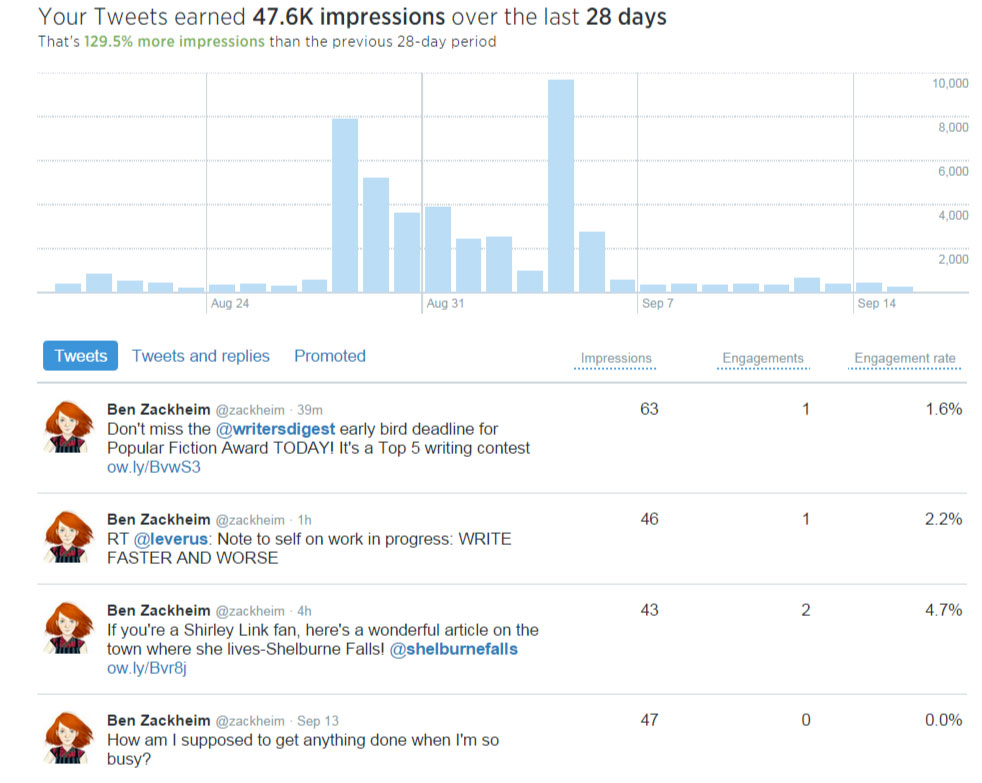
Track this data and retweet the posts that have legs to them. Logically, you wouldn’t lean on tweets that are based on breaking news too many times. But if you make a funny observation about life, really it’ll never get old!
Sticking to these rules for my Twitter-life has cleared up my head so I can pay attention to work and family and Angry Birds Star Wars.
What do you do to maximize your time-spent:impact ratio?

 Head on over to Amazon to grab The Camelot Kids: Part Two
Head on over to Amazon to grab The Camelot Kids: Part Two for $1! I’m so proud of this one. It took a little longer to release than we’d hoped, but I hope you’ll agree that it was worth the wait.










